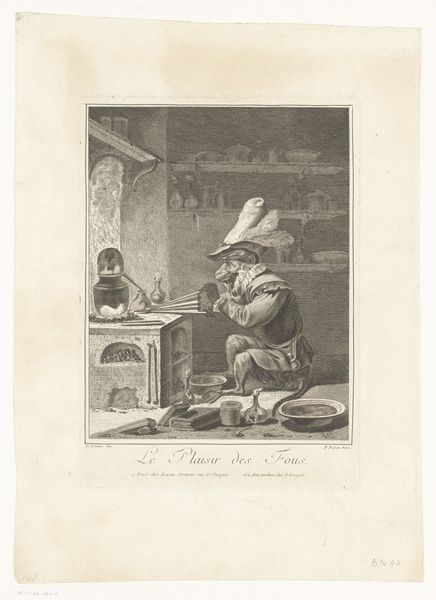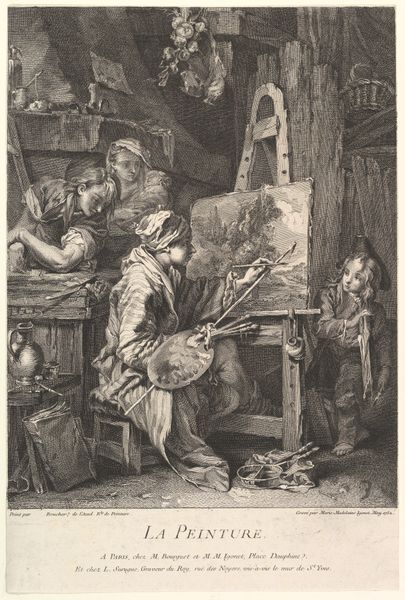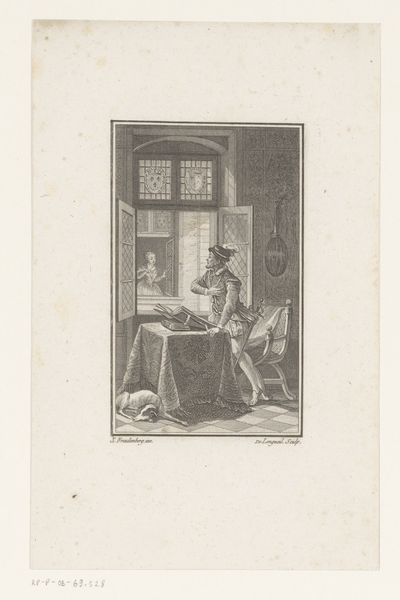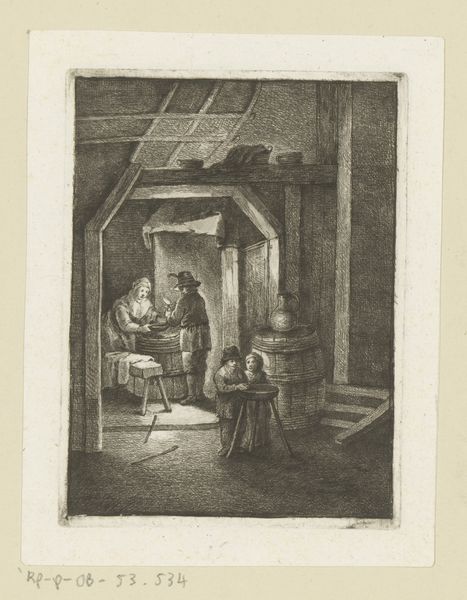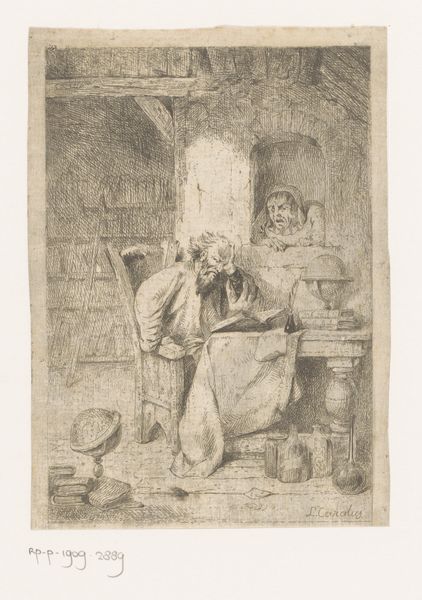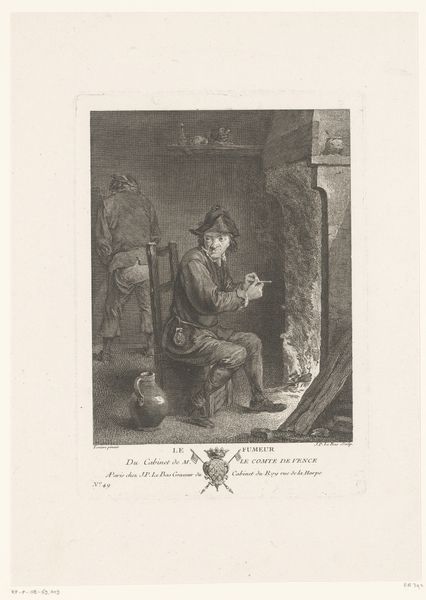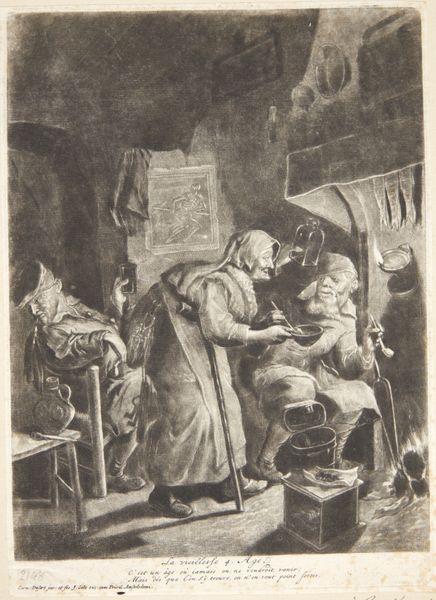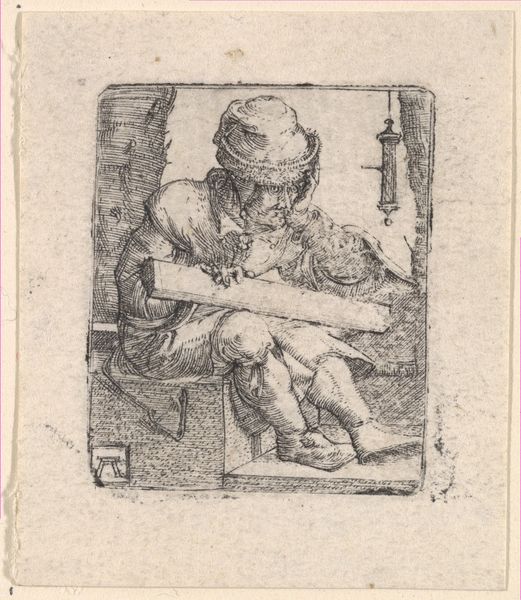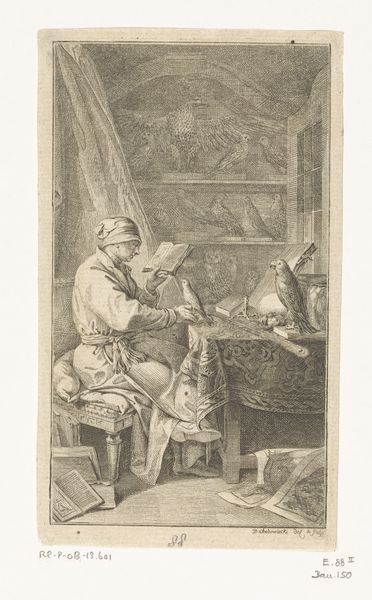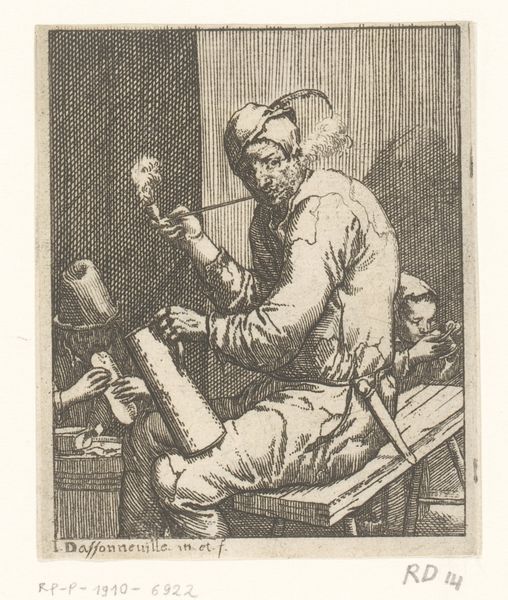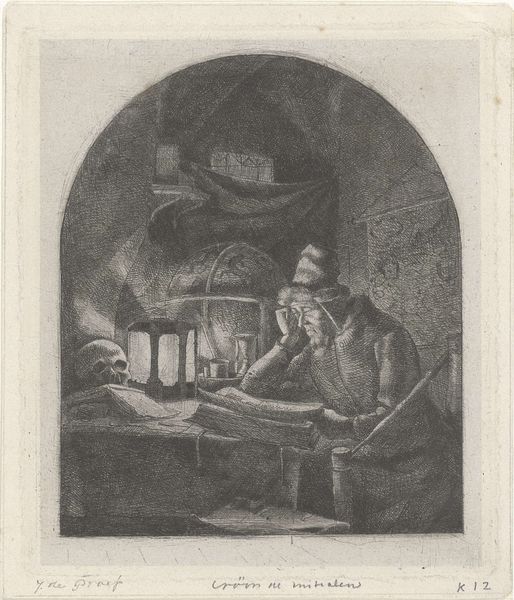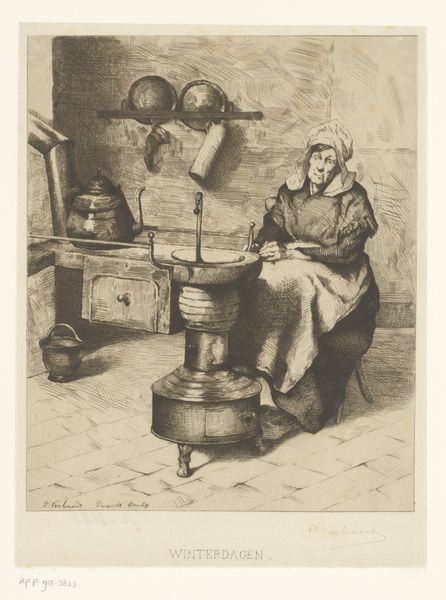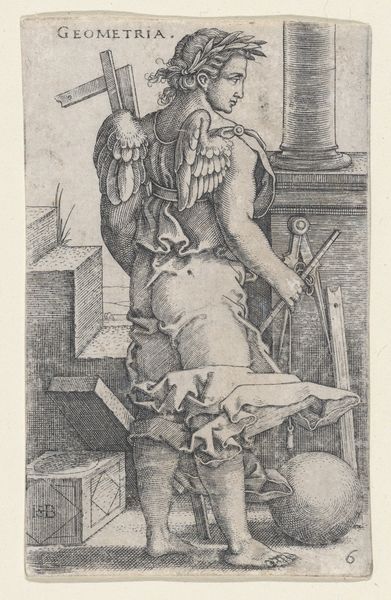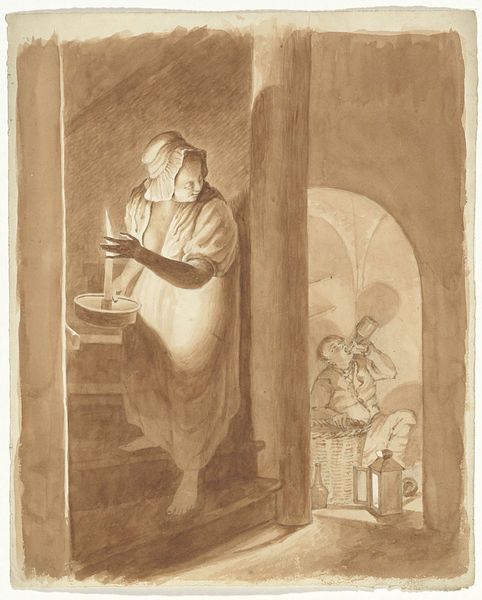
Dimensions: height 283 mm, width 188 mm
Copyright: Rijks Museum: Open Domain
Editor: So, this etching, attributed to Pierre François Basan and dating from between 1739 and 1797, is called "Spotprent van een apotheker als aap," or "Caricature of an Apothecary as an Ape." It depicts exactly that – an ape dressed as an apothecary in his shop. The detail is quite striking. What stands out to you in terms of its historical context or even the artist's technical process? Curator: Considering it’s an etching, focus on the labor embedded in its production. Each line meticulously carved, each plate carefully inked. This image critiques not just the apothecary, but the systems supporting him. Observe the overflowing shelves, suggesting an abundance, even waste. Is it critiquing access to materials, or is the etching process trying to give the viewr insights on overconsumption by upper-middle class men? Editor: That's interesting, focusing on the abundance aspect. I hadn’t considered the comment on overconsumption. I initially interpreted the caricature simply as a commentary on the quackery often associated with apothecaries. Curator: Consider what "quackery" signifies in this context. It’s not merely deception but speaks to the accessibility, production, and social relationships surrounding medicine. An ape, the caricature's center, becomes a conduit for discussing issues around class and commodity during this period. Could the piece’s function be one of challenging existing hierarchies or simply reinforcing them? Editor: So you're saying it’s not just about mocking a profession but understanding the societal systems at play that allow for, or even encourage, such practices? The material abundance visible through the artist's mark-making actually speaks to broader economic and social anxieties? Curator: Precisely! And this makes the "Spotprent" less about the individual apothecary and more about the conditions that create and sustain his practice. What does this suggest to you about its creation? Editor: That really changes my perspective. I’m starting to think of the image less as a standalone artwork and more as a product deeply embedded in its specific historical and economic moment. I’ll definitely look at art differently going forward. Curator: And by focusing on materials and the context in which art is produced, it offers an enriched, dynamic viewing.
Comments
No comments
Be the first to comment and join the conversation on the ultimate creative platform.
